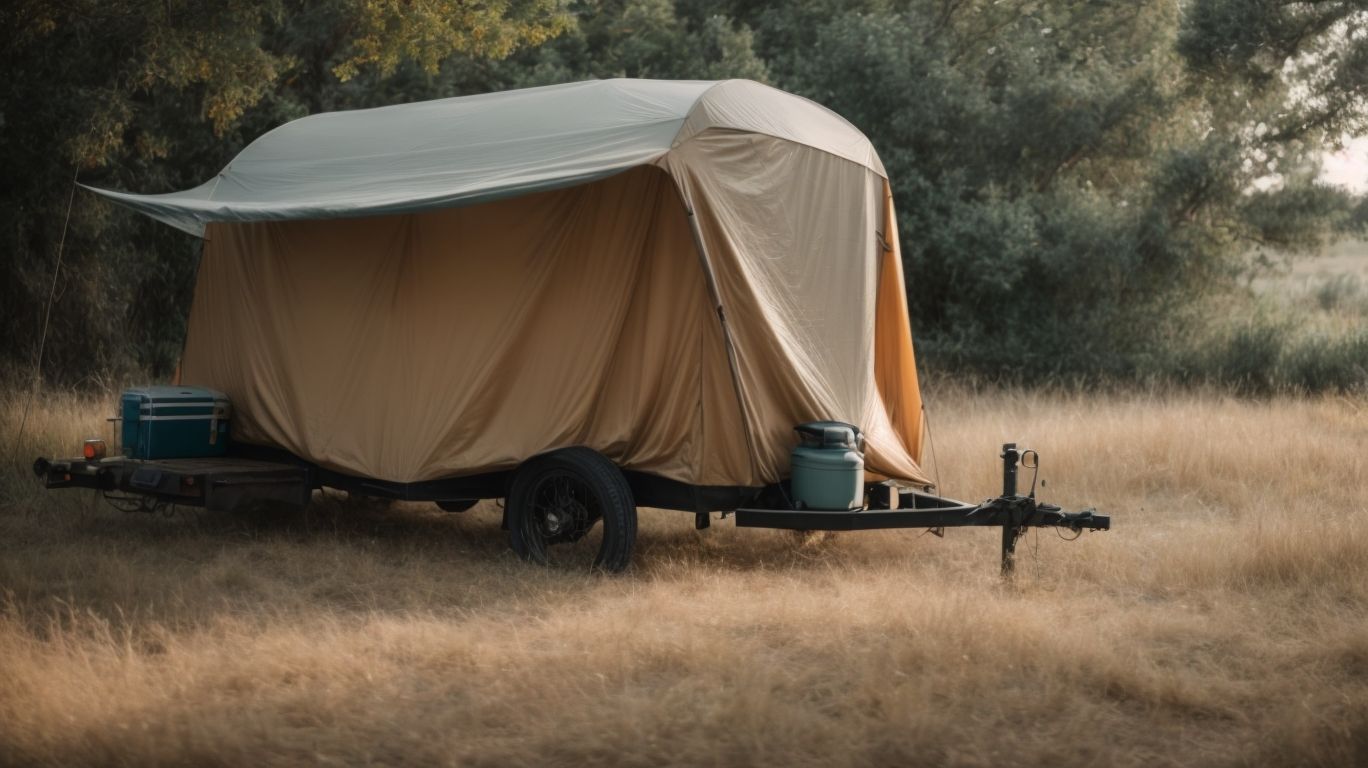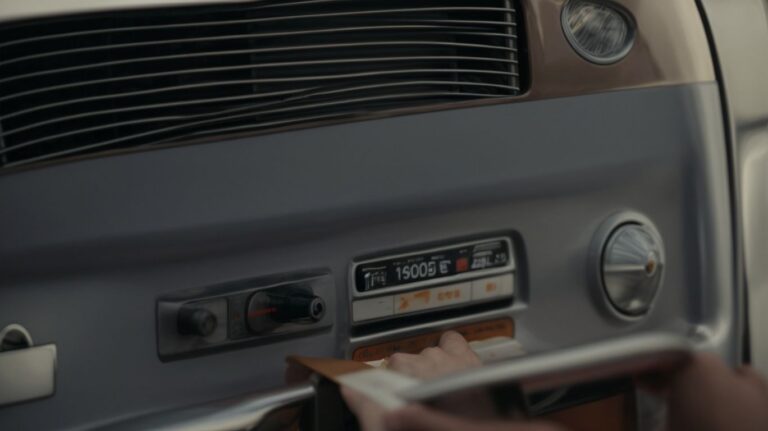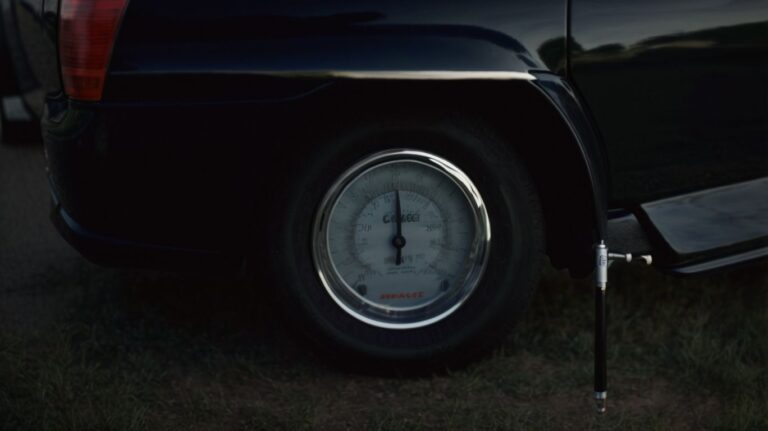Understanding Condensation with Caravan Covers: Prevention and Maintenance
Condensation can be a common issue when it comes to caravan covers, but understanding its causes and effects is essential for prevention and maintenance.
We explore what condensation is, how it affects caravan covers, and the signs to look out for. We also discuss the role of humidity and other contributing factors, as well as provide tips on how to prevent and reduce condensation on caravan covers.
Discover the best materials and cleaning products to use, as well as maintenance practices to keep condensation at bay. Whether you are a seasoned caravan owner or a newbie, this article offers valuable insights to help you tackle condensation effectively.
Key Takeaways:
What is Condensation?
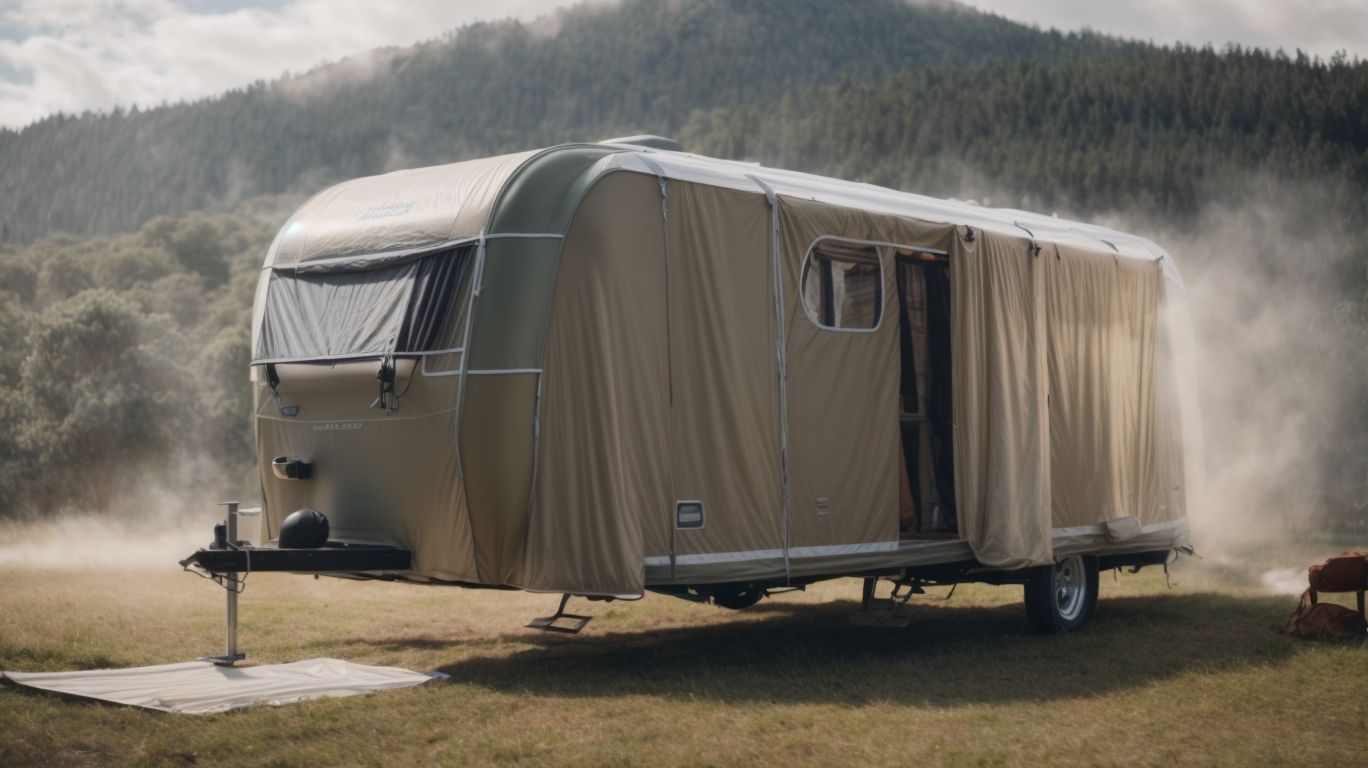
Credits: Motorcaravanning.Com – Roger Lopez
Condensation occurs when moisture in the air comes into contact with a cold surface, leading to the formation of water droplets.
One of the key factors that influences condensation is the temperature difference between the warm air and the cold surface. When the warm, moisture-laden air cools upon contact with the cold surface, its ability to hold water vapor decreases, causing the excess moisture to condense into liquid droplets. This process is commonly observed on windows during colder months.
To prevent condensation, it is important to maintain proper ventilation in living spaces, control indoor humidity levels, and ensure proper insulation to reduce temperature differentials.
How Does Condensation Affect Caravan Covers?
Condensation can impact caravan covers by accumulating on surfaces like caravan windows and creating moisture-related issues.
When condensation forms on caravan windows, it can lead to various problems such as mold growth, deterioration of the window seals, and potential damage to the interior of the caravan. This moisture build-up not only affects the appearance of the caravan covers but also poses a risk to the structural integrity of the windows.
To prevent these issues, it is essential to implement measures like ensuring proper ventilation inside the caravan, using moisture-absorbing products, and regularly inspecting and maintaining the covers to minimize the impact of condensation. By taking proactive steps, caravan owners can effectively mitigate the negative effects of condensation on their caravan covers and prolong the lifespan of their vehicles.
What are the Signs of Condensation on Caravan Covers?
Signs of condensation on caravan covers include the presence of water droplets, mold growth, mildew formation, and deteriorating seals.
Water droplets are typically the most visible indicator of condensation, often forming on the inner surface of the cover. These droplets can lead to mold growth and mildew formation if left unaddressed, posing a risk to the caravan’s interior. Damaged seals around doors and windows can exacerbate the issue, allowing more moisture to seep in. Mold and mildew not only present health hazards due to allergens but can also cause structural damage if not promptly treated.
What Causes Condensation on Caravan Covers?
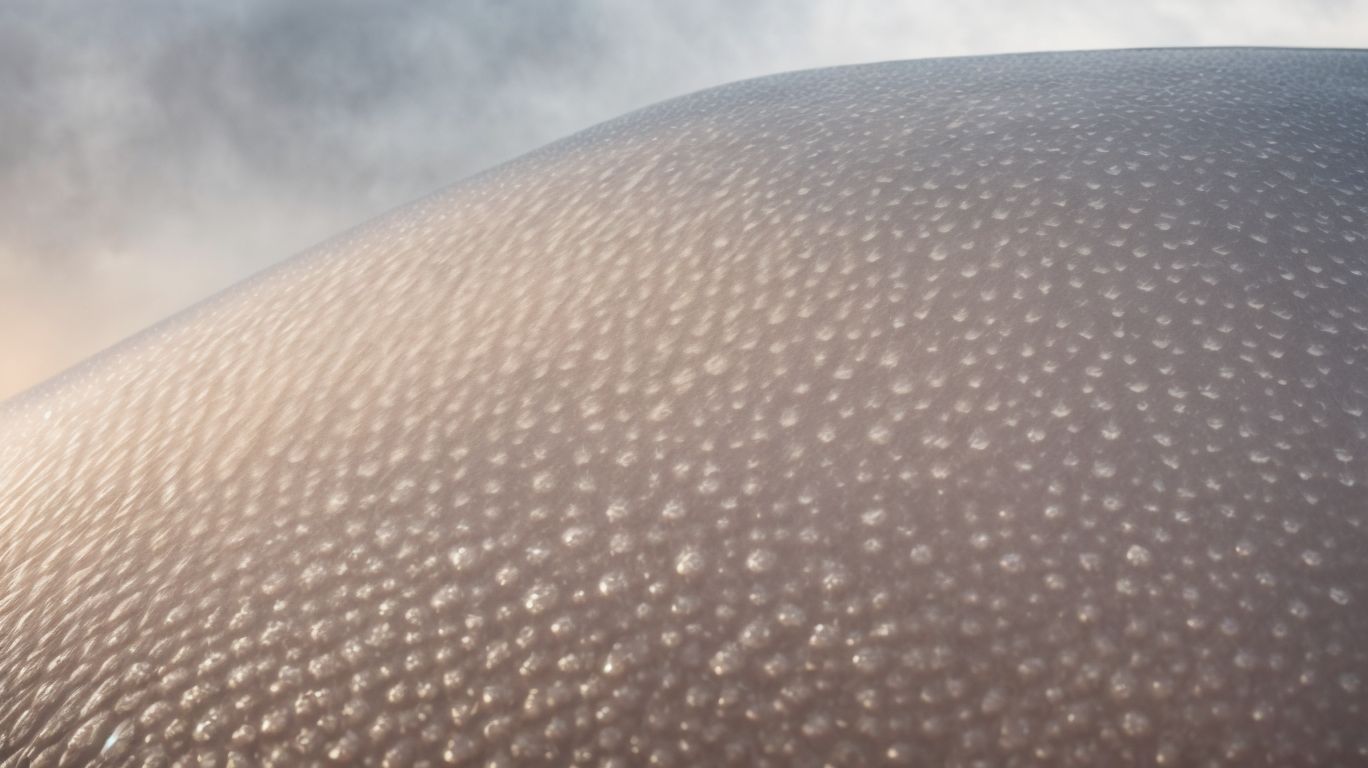
Credits: Motorcaravanning.Com – Joshua Green
Condensation on caravan covers is primarily caused by high humidity levels, inadequate ventilation, and the presence of excess moisture in the air.
High humidity inside a caravan can result from various factors, such as cooking, breathing, and even wet clothes drying inside. When warm, moist air meets the cool surface of a caravan cover, it condenses into water droplets. Inadequate ventilation exacerbates this issue by trapping the moisture-laden air inside, preventing proper air circulation that could help dissipate the excess moisture. This trapped moisture then settles on the surface, leading to the formation of condensation.
To combat this, using moisture absorbers can help reduce the overall moisture levels inside the caravan, creating a more balanced atmosphere and minimizing the likelihood of condensation on covers.
How Does Humidity Play a Role in Condensation?
Humidity contributes significantly to condensation by increasing the moisture content in the air, creating conditions ripe for condensation to occur.
When humidity levels rise, the air can hold more moisture, which, in turn, increases the likelihood of condensation forming on various surfaces. This excess moisture in the air eventually reaches its dew point, leading to the formation of water droplets on cooler surfaces. This phenomenon is particularly prevalent in areas like bathrooms, kitchens, or basements where humidity tends to be high.
Controlling humidity levels becomes crucial in combating issues related to excess condensation. Dehumidifiers play a vital role in this regard by extracting moisture from the air, effectively reducing humidity levels and preventing condensation problems.
What Other Factors Contribute to Condensation on Caravan Covers?
Along with humidity, factors like compromised seals, poor insulation, and inadequate window covers can also contribute to condensation on caravan covers.
High-quality seals ensure that there are no gaps for moisture to seep through, reducing the chances of condensation forming on the caravan cover.
Effective insulation helps maintain a stable interior temperature, minimizing the contrast between the warm inside and the cooler exterior, which can lead to condensation.
Using well-fitted window covers can further regulate the temperature inside the caravan, helping to prevent the buildup of excess moisture that could collect on the cover.
How to Prevent Condensation on Caravan Covers?
Preventing condensation on caravan covers involves ensuring adequate ventilation, using moisture absorbers, and employing dehumidifiers when necessary.
Proper ventilation is crucial to allow moist air to escape and prevent it from being trapped under the cover. Placing moisture absorbers, such as silica gel packets, inside the caravan can help absorb excess moisture in the air. These absorbers should be checked and replaced regularly to maintain effectiveness. Utilizing dehumidifiers in the caravan when encountering high levels of humidity can aid in keeping the interior dry and free from condensation buildup.
What Materials are Best for Caravan Covers to Prevent Condensation?
Choosing caravan covers made from breathable materials suited for high moisture areas like the kitchen and bathroom can help prevent condensation issues.
When selecting caravan covers for your moisture-prone spaces, it is crucial to opt for materials that allow proper airflow to prevent the build-up of moisture. Look for covers made from materials like polyester with a breathable membrane or cotton with a water-resistant coating. These materials are effective in reducing the risk of condensation by allowing any trapped moisture to escape. Consider covers with ventilation panels or mesh inserts to further facilitate air circulation and prevent dampness. By prioritizing breathable materials, you can ensure that your caravan stays protected while maintaining optimal air quality.
What Steps Can Be Taken to Reduce Condensation on Caravan Covers?
Reducing condensation on caravan covers can be achieved by using screen covers, ensuring proper laundry drying, and employing skirting to create a barrier against moisture.
Screen covers are a practical solution to help reduce condensation by allowing airflow while keeping debris out. Proper laundry drying is essential to prevent excess moisture from accumulating under the cover. Skirting around the caravan aids in creating a closed-off area, reducing the chances of moisture penetrating the cover. It’s also beneficial to use breathable materials for covers to allow for ventilation, further minimizing condensation buildup.
How to Maintain Caravan Covers to Prevent Condensation?
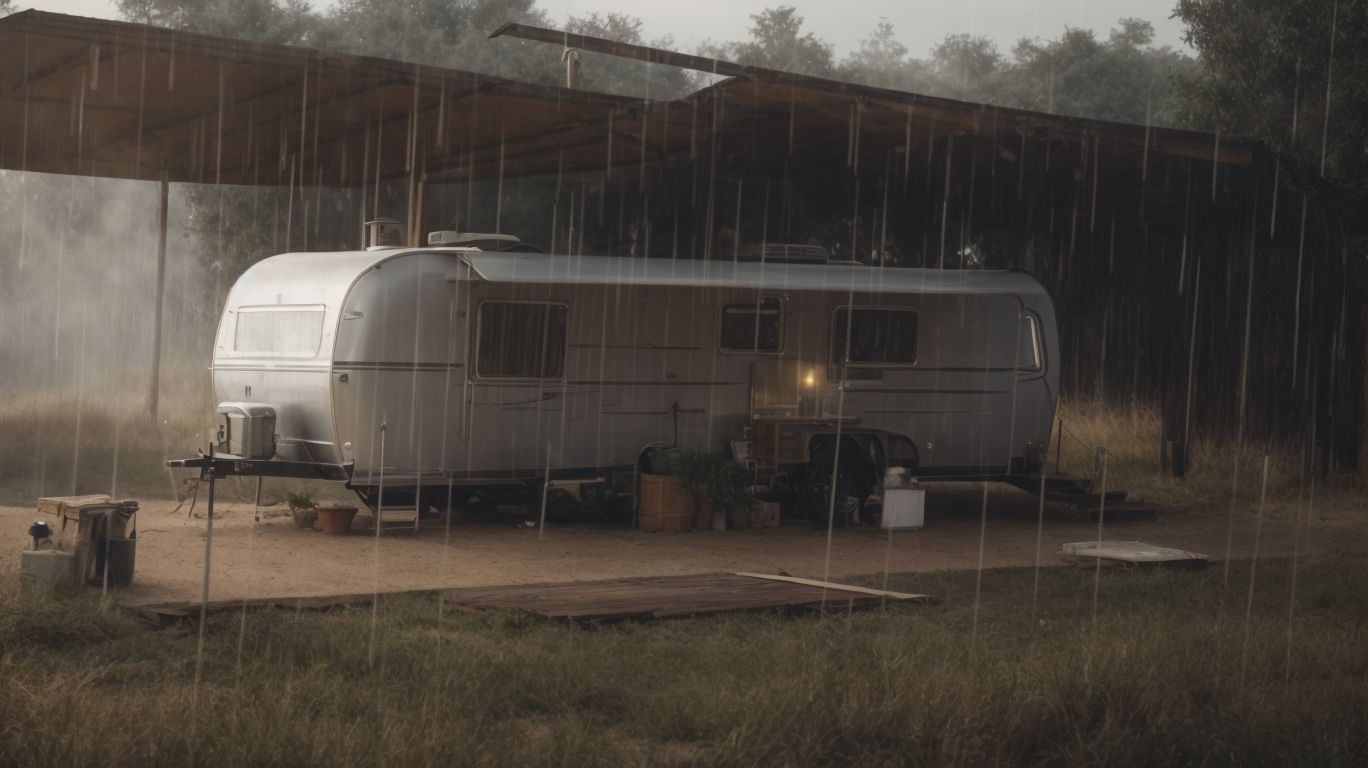
Credits: Motorcaravanning.Com – Paul Lewis
Maintaining caravan covers to prevent condensation involves regular inspections, using appropriate cleaning products, and considering the use of dehumidifiers in humid conditions.
Regular checks on the caravan cover are crucial to ensure there are no tears or damages that could compromise its effectiveness. When cleaning the cover, opt for gentle, non-abrasive agents to avoid damaging the material, and always follow the manufacturer’s guidelines for best results. In areas prone to high humidity, employing dehumidifiers within the caravan can help regulate moisture levels and prevent condensation build-up, ultimately protecting the interior from potential damage.
What Cleaning Products Should Be Used on Caravan Covers to Prevent Condensation?
Utilizing specialized cleaning products designed for caravan covers, particularly in moisture-prone areas like the kitchen and bathroom, can help prevent condensation buildup.
When selecting cleaning solutions for caravan covers, it is crucial to opt for products specifically formulated to combat moisture-related issues. For kitchen areas, consider a gentle yet effective cleaner that can remove grease and food residue without compromising the cover’s integrity. For the bathroom, a disinfectant cleaner that targets mold and mildew is ideal to maintain a hygienic environment.
It’s advisable to follow manufacturer recommendations for cleaning frequency and methods to ensure longevity and efficient performance of the caravan cover. Regularly airing out the cover and allowing it to fully dry before storage can further prevent mold and mildew growth.
How Often Should Caravan Covers Be Inspected for Condensation?
Regular inspections of caravan covers for condensation are advised, especially for static caravans, to promptly identify and address any moisture-related issues.
Condensation can accumulate on caravan covers due to changes in temperature and humidity levels, particularly in colder months or during varying weather conditions.
It is recommended to inspect the caravan cover for condensation at least once a month, or more frequently if the caravan is located in a region with high humidity or experiences frequent temperature fluctuations.
Early detection and mitigation of condensation are crucial to prevent potential damage to the caravan structure and interior from mold, mildew, and dampness.
What to Do if Condensation is Already Present on Caravan Covers?
If condensation is already present on caravan covers, immediate actions such as increasing ventilation, considering air conditioning, or installing an extractor fan can help address the issue.
Condensation on caravan covers can be a common issue, especially in environments with high humidity levels. Addressing this problem promptly is crucial to prevent mold, mildew, and potential damage to the cover itself.
One effective solution is to enhance ventilation around the caravan by ensuring proper airflow both inside and outside the cover. Utilizing air conditioning when possible can also help regulate the temperature inside the cover, reducing condensation buildup. Installing an extractor fan can provide a systematic way to remove excess moisture, thereby improving the overall air quality and reducing condensation.
Combining these strategies can effectively mitigate condensation-related concerns on caravan covers.
Frequently Asked Questions
What is condensation and why is it a concern for caravan covers?
Condensation is the process of water vapor turning into liquid when it comes into contact with a cold surface. It is a concern for caravan covers because it can cause damage and mildew growth if not properly managed.
How can I prevent condensation from occurring under my caravan cover?
To prevent condensation, make sure your caravan cover is made of breathable material and has proper ventilation. You can also use moisture-absorbing products such as silica gel or desiccant bags to help reduce humidity.
What are some signs of condensation under a caravan cover?
Some signs of condensation under a caravan cover include a musty smell, dampness, and water droplets forming on the interior of the cover. You may also notice mold or mildew growth on your caravan or cover.
How often should I check for condensation under my caravan cover?
It is recommended to check for condensation every few weeks, especially during periods of high humidity or temperature changes. Regular checks can help prevent potential damage and allow for proper maintenance.
What can I do to maintain my caravan cover and prevent condensation?
Regularly cleaning and treating your caravan cover with waterproofing spray can help maintain its effectiveness and prevent condensation. It is also important to properly dry and air out the cover before storing it to prevent mold growth.
Are there any additional tips for managing condensation with caravan covers?
Yes, you can also try using breathable cushion pads or placing a dehumidifier inside your caravan to help reduce moisture. It is also important to properly secure your caravan cover to ensure proper airflow and prevent moisture buildup.

